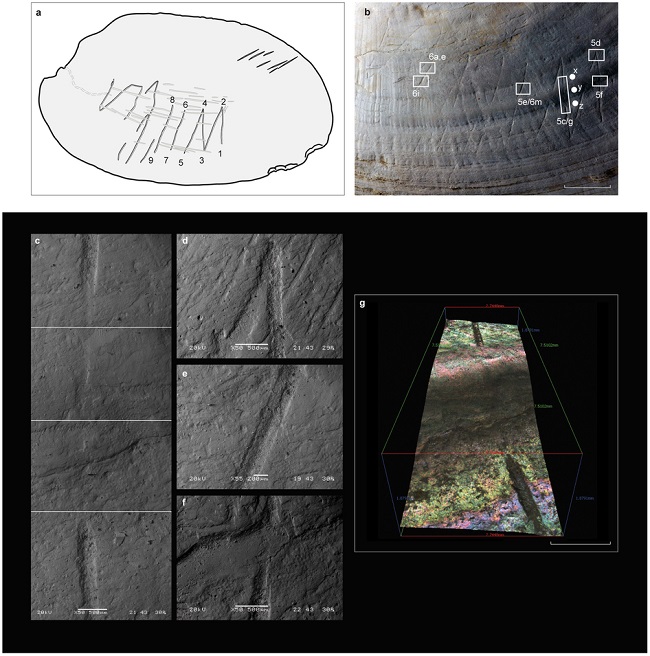The shell that carries the mark of the Home erectus 'doodle'. Image via Henk Caspers/Naturalis
A new scientific paper could change science’s understanding of the human species after a 500,000-year-old ‘doodle’ found on a shell in Indonesia disproves the theory that Homo erectus was incapable of art.
Described by one researcher as a “truly spectacular find”, the doodled shell found by Dutch researchers in the 1800s pre-dates the previously held record of the oldest discovered human design carved 100,000 years ago in modern-day South Africa.
That find was considered important because the scientific understanding was that Home erectus, one of our earliest human-like ancestors, was incapable of producing art. That theory is now thrown into disrepute with these new findings.
The findings published in the journal Nature reveals the shell had been put through rigorous analysis to rule out any possibility that the basic design could have been an act of nature or animal.
However, the design was only pointed out to Josephine Joordens, a biologist at Leiden University in the Netherlands and one of the authors of the paper, after a colleague noticed the millimetres-wide grooves after photographing them.

Details of the carvings found on the shell. Image via Joordens et al/Nature
Joordens later examined the shell under a microscope and found that the engravings were most likely created by an animal’s tooth, most likely a shark’s tooth.
Speaking of the discovery, Joordens said, “We’ve looked at all possibilities, but in the end we are really certain that this must have been made by an agent who did a very deliberate action with a very sharp implement.”
One researcher who remains hesitant as to whether the markings can be defined as art is Clive Finlayson. He is a zoologist at the Gibraltar Museum and was part of the team that discovered the first evidence that Neanderthals were the first non-human species to have created art with the hashtag design found in Gibraltar.
Despite downplaying the findings, Finlayson still believes it offers credence to the fact that our distant ancestors were capable of producing art.
“I’ve been suggesting increasingly strongly that a lot of these things that are meant to be modern human we’re finding in other hominids. We really need to revisit these concepts and take stock.”